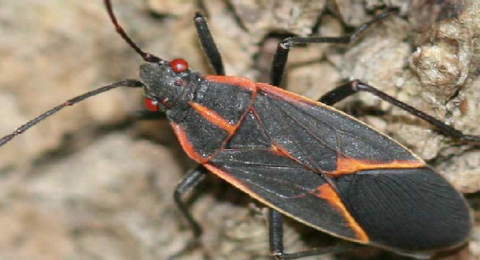
Introduction
Several species of insects invade our homes in fall and remain through winter, often hidden inside walls. When temperatures rise in the spring, they appear again, this time trying to get out. During the winter they just wait—for spring.
Below are five seasonal invaders that do not attack people or pets, stored foods, the home’s structure, or its furnishings. Three of these insects are relatively new to New Hampshire: the multi-colored Asian ladybug, the western conifer seed bug, and the brown marmorated stinkbug.

Boxelder Bug
The boxelder bug (Leptocoris trivittatus; figure 1) is not common in New Hampshire. It is strongly associated with an uncommon tree: the boxelder maple (especially the female trees, which bear seeds). Boxelder maples are occasionally planted as ornamental trees and infrequently found near rivers. Boxelder bugs rarely feed on other maple or ash trees. Adults are about ½” long and black with red markings.
Boxelder bugs start massing on buildings in early September and continue in mild weather for much of the fall. They also move into small openings in cars, trucks, RV’s, and trailers parked under boxelder trees in late summer or early fall. They do not bite when handled.
In addition to the general controls suggested in the “control” section, there is another effective option for eliminating this insect: eliminating boxelder trees nearby. Figure 2 provides a picture of a boxelder maple leaf and seeds. Trees look similar to other maples, but their leaves are dissected into three to seven leaflets. Like all maples, the leaves are opposite on the stems. The winged seeds (called samaras) grow in pairs and are similar to those of red maple and silver maple, close relatives.
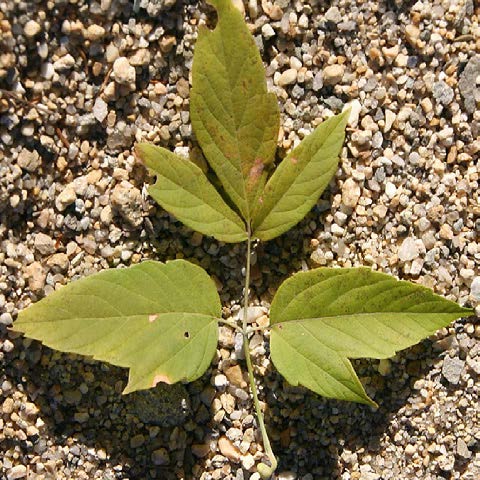
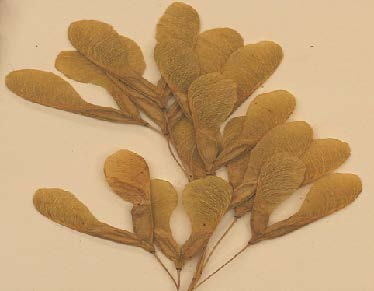
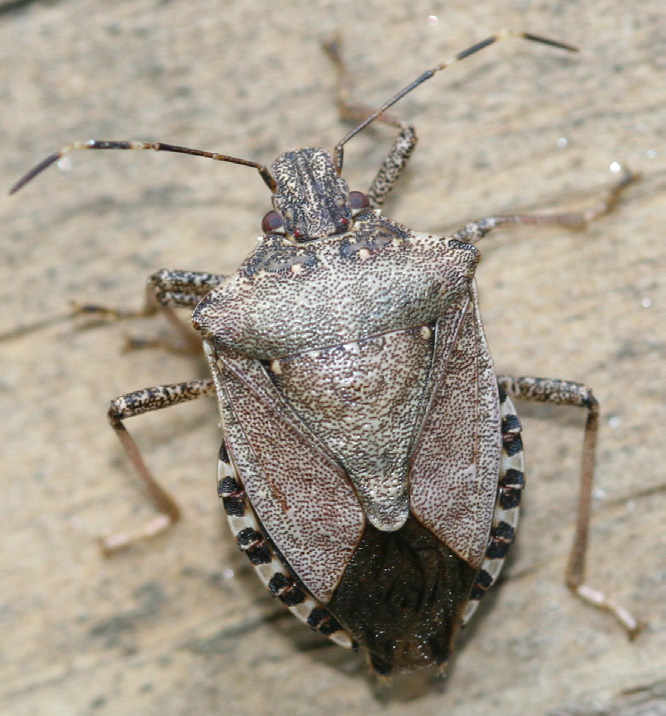
Brown Marmorated Stinkbug
The brown marmorated stinkbug (Halyomorpha halys; figure 3) is a new arrival in New Hampshire. The first specimens were confirmed in Summer 2010 in Portsmouth. This species is native to China and Japan. It first appeared in the U.S. in the Allenstown, Pennsylvania area in 1998. Other species of stinkbugs live in New Hampshire, but they do not mass on buildings. Unlike our native stinkbugs, this species has dark-and-light-banded antennae, and alternating dark and light markings along the rear edge of its body. The adult is slightly longer than ½”.
This new stinkbug will become a more serious household nuisance as it has time to expand in numbers and distribution. It is becoming a major pest of peaches, apples, corn, and some vegetables in states where it has been established for eight or more years. Although itt does not bite people, it may release a foul odor when handled.
Young adults are somewhat attracted to lights at night in late-August to mid-September. Adults mass on the outside of buildings from about September 1st to 20th. The color of the buildings does not seem to affect attractiveness, but their location—near woodlands or other sources of bugs—does. The bugs are also attracted to crevices on RVs, trailers, cars, and trucks. White vehicles seem especially attractive. Brown marmorated stinkbugs also move into small openings in cars, trucks, RV’s, and trailers. Researchers discovered an odor that is attractive to the nymphs but not adults. It might become a tool for controlling this insect. Both nymphs and adults will walk long distances and (like all stinkbugs) the adults can fly.
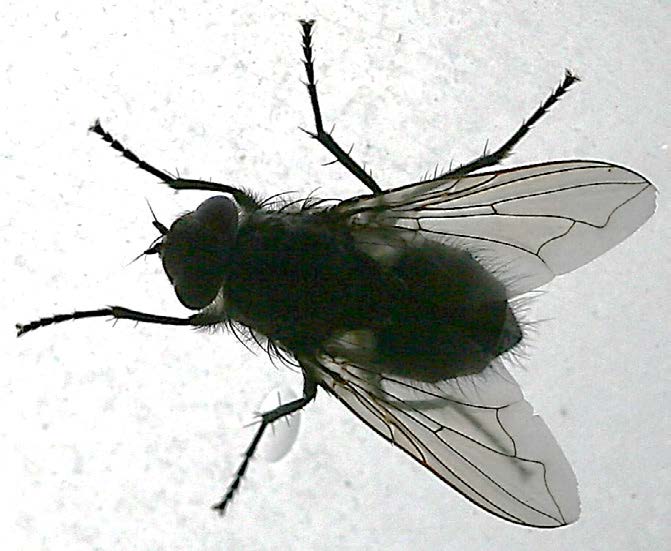
Cluster Fly
Cluster flies (figure 4) include several species that attack earthworms. We use this common name loosely, to refer to more than one species, not just Pollenia rudis. The true cluster fly (P. rudis) is native to Europe, but occurs widely in Canada and the United States. They look like large, sluggish houseflies, and are especially common at windows, especially in attics or upper floors. Cluster flies have several generations per year and the adults of the last generation move indoors to overwinter. A fly swatter works on them! As with the other species listed on this sheet, they do not attack people, homes, or furniture.
Cluster flies have several generations per year and the adults of the last generation move indoors to overwinter. A fly swatter works on them! As with the other species listed on this sheet, they do not attack people, homes, or furniture.
.jpg)
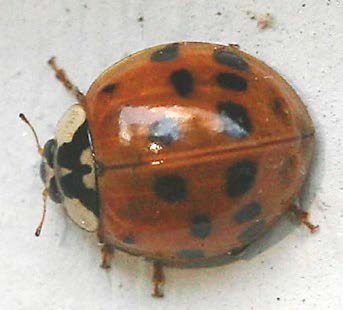
.jpg)
Multi-Colored Asian Ladybug
The multi-colored Asian ladybug (Harmonia axyridis) was first discovered in New Hampshire in 1994. In the late 1990’s, it became a major household nuisance but since then, numbers have declined. This species is highly variable in its markings, with a few individuals showing no spots at all and some showing as many as 22 black spots; photos in figure 5 show some of this variability. Most specimens have a white pronotum (the body segment just behind the head) with a black M-shaped marking. This ladybug is usually 1/5” to 3/10” long. It is especially abundant in trees. It is a valuable predator of many soft-bodied insects, including aphids, some scales and mealybugs, whiteflies, and small caterpillars. Very rarely, this insect bites when handled. Lightcolored buildings with lots of nearby trees seem to be the most attractive to these insects.
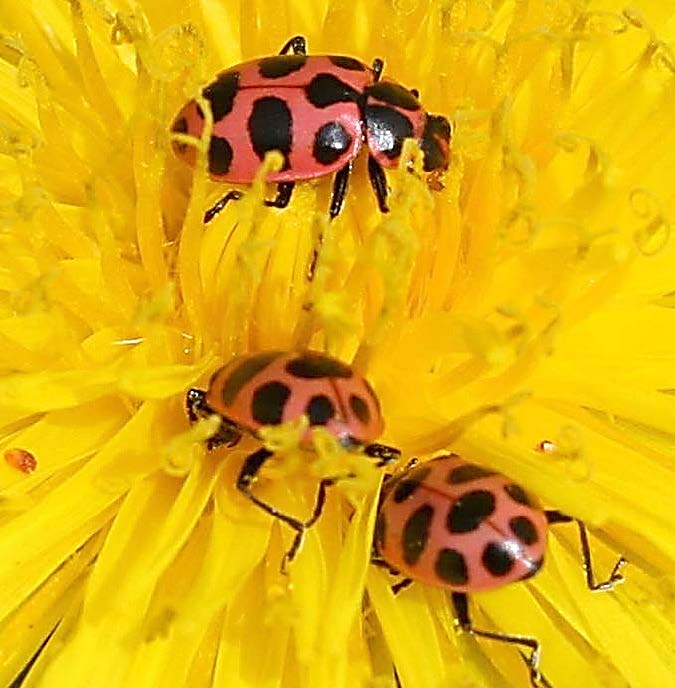
Spotted Ladybug
The brown spotted ladybug (Coleomegilla maculata lengi, figure 6) is native to New Hampshire. It invades homes in much lower numbers than the multi-colored Asian ladybug. It is 1/4” to 1/3” long, reddish-pink, with several black spots. It has a more oval, elongated shape than the multi-colored Asian ladybug. This beneficial insect feeds on aphids and does not bite people
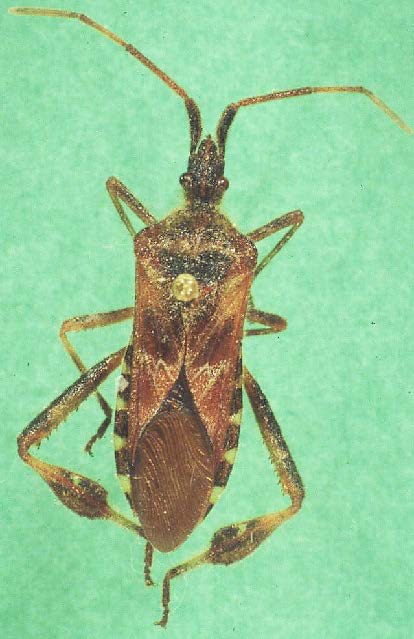
Western Conifer Seed Bug
Western conifer seed bugs (Leptoglossus occidentalis; figure 7) expanded its range eastward. In 1997, the first documented New Hampshire specimen was found in Cheshire and Sullivan counties. Now it is found state-wide. This insect feeds on developing seeds and flowers of conifers, especially pines, white spruces, and hemlocks. Adult body length is about ¾” and the insect is brown with lighter markings.
Although the Western conifer seed bug stinks when crushed, it is not a stinkbug. Near the tips of the hind legs, the tibia segment is wide and flat, a bit like a leaf. This gives the name to the family it is in: the leaf-footed bugs. This characteristic offers an easy way to tell seed bugs from stinkbugs. The seed bugs do not bite when handled.
Management
IPM Strategies:
- Cultural Practices - The best way to handle the problem of these insects invading buildings is preventing them from getting inside. All of the insects mentioned in this fact sheet readily crawl into crevices they find in buildings, including cracks between wooden shingles, narrow ventilation louvers, and air conditioner vents. Once air conditioners are no longer required, cover their openings with fine netting or remove them from windows. During periods when insects are swarming on the outsides of buildings in high numbers (usually sunny days in fall), try to limit or avoid opening doors and windows on the sunny sides of buildings. The insects that get indoors can be swept into a jar and released outdoors. A vacuum cleaner quickly picks up the insects (but empty the bag or canister quickly before they crawl out again).
- Mechanical Practices - Thorough caulking and sealing will help, particularly on the east, south, and west sides of buildings. If possible, caulk and seal before early-September.
- Monitoring - Examine the outside of your home and locate the cracks and crevices.
- Chemical Control - We do not recommend spraying insecticides to handle this nuisance problem. Most insecticides are toxic to people, so their use in or on buildings or vehicles can increase people’s exposure to these toxins. Also, some of these insects mass in very high numbers (partly due to odors they release that attract others of their species). Insecticides often do not kill them fast enough to relieve the problem. A third reason for not recommending insecticides is that the ladybugs are beneficial predators. Consult your county Agricultural Field Specialist for specific recommendations.
Acknowledgements: This publication was supported in part by an Extension IPM Grant from USDA’s National Institute for Food and Agriculture.
Download the resource for the complete fact sheet.
